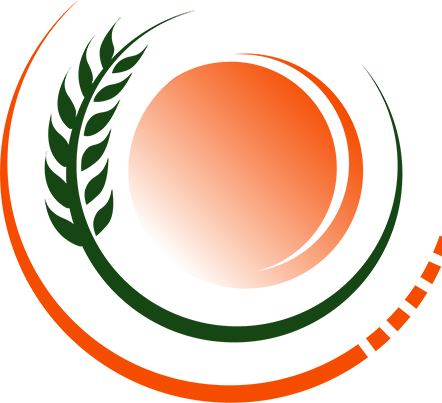Exploring the Journey of Richard Stiennon, Founder of IT-Harvest: From Engineering to Cybersecurity Intelligence
In the rapidly changing world of cybersecurity, it’s not often that you meet someone with the longevity and insight that Richard Stiennon, founder of IT-Harvest, brings to the table. Having experienced both the evolution of tech and the rise of the cybersecurity industry, Stiennon’s career is a rich blend of engineering, entrepreneurship, and data-driven analysis. Recently, I had the opportunity to dive into his journey, learning how his hands-on experience and thoughtful pivots have shaped IT-Harvest and his work as a cybersecurity analyst.
Building IT-Harvest and Tracking Cybersecurity Vendors
Stiennon has worked on more than 24 startups, but the creation of IT-Harvest holds a special place. Initially set up as a consulting venture, it quickly became a research powerhouse for cybersecurity data. With a meticulous approach, Stiennon began building a directory of cybersecurity vendors worldwide, currently tracking around 3,200 vendors. This extensive database provides unique insights for security architects, industry analysts, and enterprises alike.
“We track their accounts. We know their growth rates year over year,” Stiennon said, explaining the significance of IT-Harvest's work. The firm’s database has become indispensable, particularly as the cybersecurity landscape becomes more complex. Stiennon recalled, “We pivoted...to start selling our product to large enterprises that have security teams that need to pick security solutions from all these vendors.”
Leveraging Technology: From AI to SaaS Solutions
Stiennon’s experience also shows how keeping pace with emerging technologies can fuel a business’s growth. IT-Harvest made a critical pivot to SaaS, turning its directory of vendors into an online platform. The timing was perfect as advancements in large language models like OpenAI’s arrived, providing tools that would enhance IT-Harvest's analytical capabilities. “We’re in a perfect position to take advantage of [AI],” Stiennon shared. "We used OpenAI...to grab all the vendors’ products, analyze products, give us the names, descriptions, feature sets, integrations, use cases, compliance standards...and line each one up with industry standards.”
This data transformation was only possible because of Stiennon’s proactive embrace of no-code and low-code development platforms. One notable example he shared was when he tasked an intern with building an app using the no-code platform Bubble. “In two weeks, he made one better than the spreadsheet, and another two months later, we launched the product,” Stiennon said, emphasizing how this rapid development cycle accelerated IT-Harvest’s growth.
The Value of Internships: Mutual Growth and Learning
Stiennon places a strong emphasis on the benefits of internships, both for students and for the startups they join. Reflecting on his own experiences, he highlighted that in startups, interns aren’t just there for "grunt work"—they have a unique opportunity to contribute directly to impactful projects. “They can hire interns to kind of mirror what the person who’s doing marketing does, or the person who’s doing sales does,” he said, explaining how startups can effectively integrate interns.
At IT-Harvest, several interns from diverse backgrounds have taken on important roles, leading to a rewarding learning experience for both sides. Stiennon’s first intern developed their no-code app, and within a few months, the team had their first paying customer. This intern, initially a student, later took on an even more integral role as the company’s CTO. "Pretty soon you're treated just like you're a regular employee, not as an intern," he explained. His advice for other startups considering interns? Find those who are proactive and bring enthusiasm to the table.
Overcoming Challenges as a First-Time Founder
For first-time founders, Stiennon had words of wisdom, reminding them that learning on the job is often the biggest hurdle. Mistakes will happen, but they can often be mitigated with strategic business moves and thoughtful management of resources. “They might blow $10,000 on Google ads...and they have to be able to survive those little bumps,” he noted. From unexpected expenses to unforeseen learning curves, early-stage startups face many obstacles. But Stiennon believes that as long as founders remain adaptable, they can recover and continue to grow.
When it comes to seed funding and scaling, Stiennon highlighted the vast difference between bootstrapped companies and those on the Y Combinator or Silicon Valley path. Reflecting on his own journey, he shared that IT-Harvest was entirely bootstrapped, allowing the company to grow organically without outside investment pressures. "You get hired based on your personality, your ability to communicate, your enthusiasm," he advised, noting that networking and personal qualities play a huge role in navigating early challenges.
Changes in the Entrepreneurial Landscape
Having been in the tech industry for decades, Stiennon has observed the changing face of entrepreneurship. Back in the 1980s, “not a single school in the country had entrepreneurship classes,” he pointed out. Today, startups have a wealth of resources, from accelerator programs to access to venture capital that wasn’t as readily available in previous decades. However, while today’s founders have more educational support, Stiennon believes that many still face similar challenges when it comes to establishing a product-market fit and managing resources wisely.
For Stiennon, the entrepreneurial journey is ongoing. His dedication to continuously evolving IT-Harvest’s offerings and leveraging new technologies has been key to the firm’s success. And his commitment to mentoring young talent shows his belief in passing down the insights he has gained over his career.



